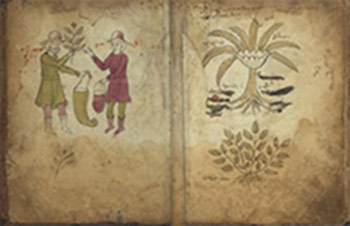At a time when students in art history are said by many to be choosing overwhelmingly to study contemporary art (a point made here by Maxwell Hearn of the Met), the University of Pennsylvania is adding to its medieval studies department.
What gives? A gift to the Penn Libraries, that’s what, and a very nice one at that.
 Penn recently announced that it has received a major collection of 280 Medieval and Renaissance Manuscripts, valued at over $20 million, from a Penn alum, and long-time benefactor and Library Board member Lawrence J. Schoenberg, and his wife Barbara Brizdle Schoenberg.
Penn recently announced that it has received a major collection of 280 Medieval and Renaissance Manuscripts, valued at over $20 million, from a Penn alum, and long-time benefactor and Library Board member Lawrence J. Schoenberg, and his wife Barbara Brizdle Schoenberg.
Along with the gift, the Penn Libraries plan to create the Schoenberg Institute for Manuscript Studies to promote the use of the Schoenberg’s gift and other manuscript collections. Presumably, art history students will get the message and sign up. According to the press release:
Items from the Schoenberg collection have already attracted graduate students completing doctoral dissertations, undergraduates writing class papers, and scholars engaged in research and instruction in History, English, Music, History of Art, Religious Studies, Near Eastern Languages and Civilizations, East Asian Languages and Civilizations, and South Asian Studies, from Penn and abroad.
The collection, according to the release and an article in the Penn Current, contains manuscripts in art, science, mathematics and technology. “It is comprised of early manuscripts in Eastern and Western languages that illuminate the scope of pre-modern knowledge of the physical world in the Christian, Jewish and Muslim traditions,” the Current says, and adds:
The collection traces the reading and interpretation of ancient authorities that had central importance in the history of ideas, including Aristotle, Euclid, and Ptolemy. It prefigures the advances of Copernicus, Descartes, Newton, and Leibniz, and it illuminates lesser-known figures like Nastulus, the inventor of astrolabes, an ancient , and al-Zahrawi, devisor of medical instruments.
A catalogue for some items seems to be already online, including “virtual facsimiles.” That’s a page from an Eastern Mediterranean 15th Century herbal medicine manuscript above.
The Schoenbergs seem to be quite hooked on manuscripts. Penn says that their previous gifts to the university include “support for the creation of the Libraries’ Digital Humanities presence through the Schoenberg Center for Electronic Text and Image (SCETI); the Schoenberg Database of Manuscripts, which tracks manuscript sales and provenance; as well as the annual Schoenberg Symposium on Manuscripts in the Digital Age; and the Lawrence J. Schoenberg & Barbara Brizdle Manuscript Initiative, established in 2006 to support the acquisition of manuscripts, preferably produced before 1601.”
They’re collectors, all right, and that’s a compliment.
Photo Credit: Courtesy of Penn Libraries
